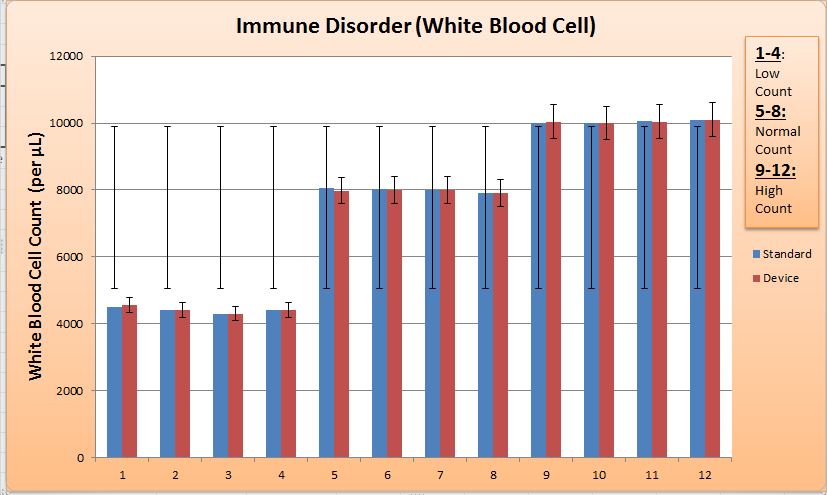BME100 s2015:Group2 9amL3: Difference between revisions
| Line 101: | Line 101: | ||
*Logo | *Logo | ||
[[Image:LAB3B_5.jpg]] | [[Image:LAB3B_5.jpg]] | ||
*Design | |||
[[Image:LAB3B_A.jpg]] | |||
[[Image:LAB3B_B.jpg]] | |||
[[Image:LAB3B_C.jpg]] | |||
Latest revision as of 23:53, 3 March 2015
| Home People Lab Write-Up 1 | Lab Write-Up 2 | Lab Write-Up 3 Lab Write-Up 4 | Lab Write-Up 5 | Lab Write-Up 6 Course Logistics For Instructors Photos Wiki Editing Help | |||||
|
OUR TEAM
LAB 3A WRITE-UPDescriptive StatisticsTemperature Std. Dev. of Gold = 1.195668231 Std. Dev. of Spree = 0.496460828 Mean of Gold = 97.25568182 Mean of Spree 98.32954545 T-test value = 2.16259E-12 Pearson's R => R² = 0.0178
Std. Dev. of Gold = 30.84092677 Std. Dev. of Spree = 34.33867614 Mean of Gold = 94.88349515 Mean of Spree = 101.9514563 T.Test value = 0.00034491 Pearson's R => R² = 0.6867
Results
AnalysisTemperature The t-test value was less than 0.5 - therefore there was a significant difference between the two measurements of heart rate. Pearson's R indicates a small positive correlation but because it was such a small number it cannot be considered reliable or significant. This is because the Spree categorizes temperature with four different colors and comparing that to the much bigger variation of temperature found in the human body the R value was therefore very small.
The t-test value was less than 0.5 - therefore there was a significant difference between the two measurements of heart rate. Pearson's R indicated a positive correlation but was still not close to 1 because the Spree values did not match up with the values given by the oximeter.
Summary/DiscussionDue to continuous technical difficulties throughout the class, our group (#2) paired up with another group (#5). Then the technical difficulties continued for 45 minutes. This was primarily due to the fact that the Spree requires the individual to be continuously moving while connecting to Bluetooth. This design flaw presents an issue when trying to compare the Spree’s accuracy in measuring heart rate when comparing it to other medical devices. The experiment required the Spree to measure heart rate while at rest, which is not possible given the design parameters of the Spree. As a result of this design flaw, the data obtained while at ‘rest’ is inaccurate and misleading. The user interface for the Spree is not intuitive, requiring the user to input estimated continuous speeds. An individual ‘estimating’ their movement speed is unrealistic for the simple fact that it can’t account for external factors. The Spree also does not measure temperature as a numerical value but rather by ‘levels’ that levels range from 1 to 4. As a result, the user will never receive their accurate body temperature. Because the Spree is not secured in the headband, an additional non-technical flaw is the device has the possibility to fall out of the headband in the case of the user falling or the the apparatus being mishandled. A few simple recommendations for improving the Spree: increase sensor sensitivity and accuracy; have it turn off after an hour of inactivity; and design each Spree to have a unique and simple identity for Bluetooth connection. In conclusion of the Spree design observation, it is not user-friendly and cannot be recommended for commercial use.
LAB 3B WRITE-UPTarget Population and NeedThe device would have the ability to measure oxygen levels, temperature, heart rate, blood pressure, glucose levels and white blood cell count in real time and interpret the data to alert users of any abnormalities in measurements. The data would then be accessed through a variety of sites, including a phone application, email or website account. Glucose levels would be relevant for diabetics to determine their need for insulin. Heart rate, blood pressure, white blood cell count and oxygen levels would compute data to determine their risk for stroke, heart attack, hypertension, and other disorders in the elderly population. Immune competency can be measured through white blood cell count, identifying alarming levels in people with immune disorders.
Device DesignThe design of the device would need to be a microprocessor chip inserted in a patient's body, next to an artery to accurately read heart rate and blood pressure. It would also need to be in contact with blood in order to measure oxygen levels and white blood cell count using a pH meter. A reading of blood sugar would determine glucose levels. If any high-risk activity is detected an alert would be sent to a previously identified emergency contact. If emergency contact does not respond within a specified time, risk and location would be sent to nearby hospital.
Inferential Statistics
Graph
|
|||||



























